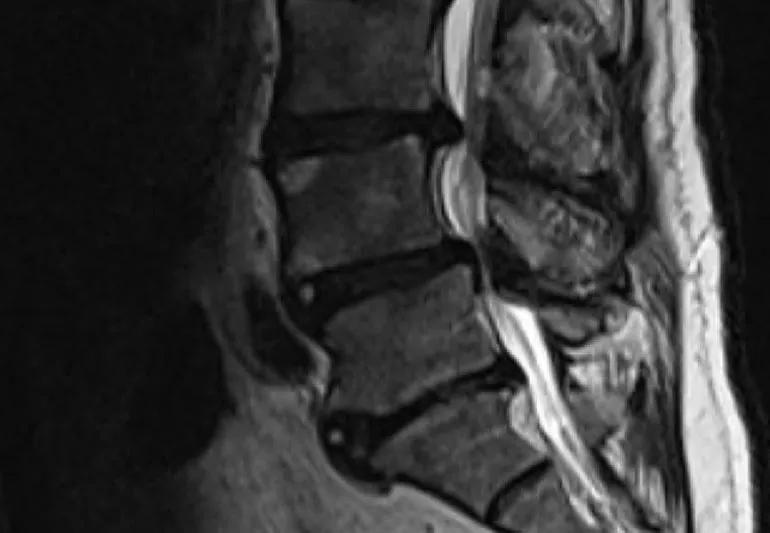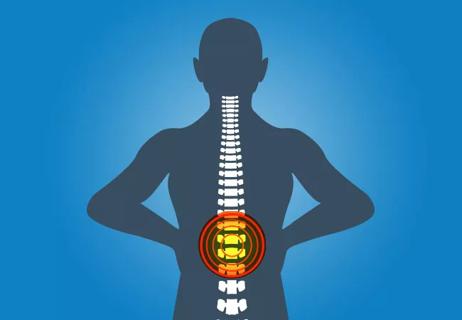Advertisement
Surgical help for spinal stenosis + instability

Spine surgery sounds scary, especially spinal fusion, which has gotten something of a bad reputation. But when done for carefully selected patients, this surgery can have a very good outcome.
Advertisement
Cleveland Clinic is a non-profit academic medical center. Advertising on our site helps support our mission. We do not endorse non-Cleveland Clinic products or services. Policy
It’s important to understand that while back pain is a common complaint, most people do not need surgery. Back problems can stem from a variety of causes, including muscle strains, herniated disks, osteoarthritis, spinal stenosis and others. Nonsurgical measures, such as physical therapy, core strengthening, nonsteroidal anti-inflammatory drugs and activity modification, usually relieve symptoms.
Surgery is a last resort for people not helped with other measures. Spinal fusion becomes an option for people with radiating nerve pain from spinal stenosis. “In most circumstances, spinal fusion is not done to treat back pain,” says spine surgeon Jason Savage, MD. “We do it along with another procedure that takes care of nerve pain for people who also have evidence of instability in their spine.”
Your spine is a stack of bones (vertebrae) separated by disks made of a cushioning material. Each vertebra has a cylindrical body, in the back of which is a hollow ring and bony projections, where the vertebrae interlock with ones above and below. The spinal cord runs through the column formed by the hollow rings. Nerves exit the spinal canal through spaces between the vertebrae called the neural foramen.
Spinal stenosis occurs when there is narrowing of the spinal canal or the neural foramen. This can put pressure on nerves. When this happens in the low back, it can impinge on the sciatic nerve, which extends from the low back down the leg. Common symptoms of sciatica are sharp pain, numbness, tingling and weakness in the buttocks and/or leg.
If nonsurgical measures fail to relieve symptoms of spinal stenosis, a surgical procedure called laminectomy (also referred to as decompression) can be done. A portion of the vertebra called the lamina is removed, along with any bone spurs or ligaments that may be causing the narrowing. The procedure makes more room for the nerves, thus relieving symptoms.
Some people have spinal stenosis plus instability in the spine, and this is where spinal fusion has a role. Fusion surgery permanently joins (fuses) two vertebrae together.
“The two most common causes of instability are degenerative spondylolisthesis and scoliosis,” says Dr. Savage. With spondylolisthesis, a vertebra has slipped forward or backward in relation to the adjacent vertebra. Scoliosis is a rotational curvature of the spine, which can occur in adults over time as a result of degeneration of disks. These conditions can worsen symptoms of spinal stenosis.
“If you do surgery to take the pressure off the nerve and don’t do a fusion for these patients, the long-term results are typically not as good,” says Dr. Savage. To maintain the benefit of the decompression, surgeons perform fusion to stabilize the spine. This prevents further slippage or curvature in that location.
A study published in the New England Journal of Medicine found that people with back and leg pain from spinal stenosis who also had spondylolisthesis did better with decompression plus fusion than with decompression alone. This continues to be studied.
“The most common fusion procedure we perform is a one- or two-level fusion plus decompression for people with spinal stenosis and spondylolisthesis,” says Dr. Savage.
To find out if you are a candidate for this surgery, a set of imaging studies will be done. These include an X-ray of the spine while standing to look at the position of the bones and magnetic resonance imaging (MRI) to get a more detailed image of the nerves and soft tissues.
Advertisement
The surgery involves inserting a small amount of bone (bone graft) in the space between the two vertebrae to stimulate them to grow together, much the way the two ends of a broken bone heal back together. The bone graft often is taken from bone that was removed during the laminectomy.
Because it takes six months to one year for the vertebral bones to completely fuse, the surgeon also places screws and rods to hold the vertebrae together.
You can expect to be in the hospital for two to three days after decompression and spinal fusion surgery, and you’ll probably get up and walk on the first day. There’s usually a four- to six-week recovery period before returning to normal activities. Full recovery can take longer.
The surgery carries the same risks as most surgery, including infection, bleeding and blood clots. But these are rare.
Spinal fusion takes away some mobility. Because it usually involves just one or two levels of the spine, any motion limitations will be minor. But there is a risk for what is called adjacent segment disease. The lack of motion between two vertebrae can put excess pressure on the areas above and below, which over time can cause symptoms in these areas. For this reason, about 25% of people who have fusion surgery require another fusion within 10 to 20 years.
“Appropriately selected patients who need fusion do very well with this operation,” says Dr. Savage. “The decompression is what treats the neurologic symptoms. The fusion treats instability that can be associated with that.”
This article originally appeared in Cleveland Clinic Arthritis Advisor.
Advertisement
Learn more about our editorial process.
Advertisement

5 noninvasive options for relief

Medical conditions may masquerade as spine pain

In response to stress or danger, your brain responds by either defending itself, running away, stopping or reconciling

A variety of healthy foods can help reduce inflammation and keep other conditions at bay

Some ‘flare-ups’ are temporary and expected, others can signal a need to change therapies

Our collective misremembering of events comes from a surplus of false memories

Most routine vaccines are safe for people living with multiple sclerosis — but be sure to talk with your care team about your needs

Current research suggests 1 out of every 36 children in the U.S. has ASD — and that’s probably an undercount

Focus on your body’s metabolic set point by eating healthy foods, making exercise a part of your routine and reducing stress

PFAS chemicals may make life easier — but they aren’t always so easy on the human body

While there’s little risk in trying this hair care treatment, there isn’t much science to back up the claims